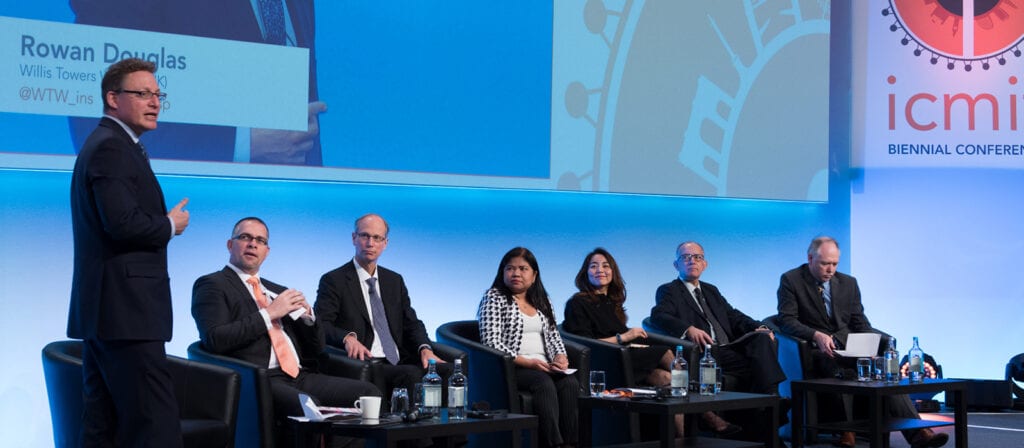The nature of systemic risk
For a global reinsurer, systemic risk could be considered to be a risk where every policyholder could be affected by a single event, meaning they cannot achieve diversification across time or geography. Pandemic and cyber are examples of systemic risk where globally everyone could be affected, whereas climate change is a slow onset peril that doesn’t affect everyone at the same time.
However, a risk that could affect everyone in a particular country, such as climate-related risks, could be viewed as systemic in the eyes of the government of that country. For example, systemic risks linked to extreme weather events in Africa are risks that the government cannot adequately respond to and affect the whole population. Climate change creates conditions such as extreme heat and humidity that can kill people, and raises the potential for pandemic conditions.
Working with governments and regulators
It is important to understand the difference between working with governments and regulators. Governments have other objectives they need to balance before agreeing to financially back any initiative, which means it can be a slow process. There is a big educational gap between the risk experts and government officials that need to balance different objectives. It is necessary to engage with government early, be persistent and invest in educating the government on how insurance can form part of a solution, as well as better understanding the government perspective and the other objectives they need to balance out.
The regulator is a different beast; the objectives of the regulator would be to ensure continuous coverage and to make sure resilience is built into the financial system. The government is focused on taxpayers’ money so any intervention from insurance would be considered in terms of how it can make the market more efficient. The government has a limited knowledge of insurance so it is the responsibility of the insurance sector to educate the government about risk management.
There is also a general reluctance of government to give away vast amounts of money that the insurance industry will then decide how to distribute. There is no equivalent of a Chief Risk Officer in government looking at ways of actively managing risk, so for any initiative it is necessary to talk to many different parties in government, often with different objectives.
African Risk Capacity
The African Risk Capacity (ARC) Group is a Specialized Agency of the African Union established to help African governments improve their capacities to better plan, prepare, and respond to extreme weather events and natural disasters. There are a number of key partners that provide funding to ARC, including development banks and agencies from countries such as Germany, United Kingdom, France, USA, Canada and Switzerland. African Risk Capacity’s Replica Coverage allows UN agencies and other humanitarian actors to match ARC country insurance policies. By matching country policies, international resources can be used more cost-effectively through participation in ARC’s government-led risk management system while doubling the coverage of climate risk insurance.
Public-private partnerships (PPP)
For any risk sharing agreement the biggest value add from the (re)insurance side is its higher knowledge of risk management, pricing, loss adjusting, modelling and managing the end-to-end process. The role of government in a PPP is to expand the balance sheet of the private sector because the sheer magnitude of potential loss from systemic risk (like pandemic) is too much for the private sector to bear alone.
Pool Re, UK’s terrorism pool, has an unlimited guarantee from the UK government that allows a structure to be developed that effectively distances government away from the risk by involving the private market. Pool Re has educated reinsurers on how to underwrite the terrorism risk that previously they wouldn’t get involved in.
For any PPP, it is important to allow the government to have profit from the arrangement. With the need to provide value for money for the taxpayer, many modern governments operate like companies and are subject to public scrutiny and fiscal pressure.
In order to develop a PPP for pandemic or cyber, it is not possible to do it on a worldwide basis because it is too complex for the reinsurance market to deal with so many governments collectively. Any solution would have to be done on a country by country basis, or on a regional level such as the EU, and would have to be absolutely clear and transparent on how to pay out, event definition and mitigation measures such as speed of lockdowns on a national or regional level. It may not be possible to solve the systemic issue completely, but a PPP can help to make it a smaller issue.
Cyber
Cyber is special in that there is no other example of systemic risk where so many objectives are aligned. It offers potential growth in the insurance industry, helps the government’s objective to promote economic activity as well as improving operational resilience and protection of business. Cyber is a very systemic risk with the potential for a huge event, only a PPP can provide enough investment in understanding the risk, building resilience and raising awareness of everyone. Using insurance as a tool to do this, cyber risk can gradually be made less and less systemic. The model for Pool Re could be used for cyber, with the public and private sides working together to accelerate what is bound to happen eventually.
Session speakers
- Alex Ntelekos, Regional Director, Head of Public-Private Solutions, EMEA, Gallagher Re (UK)
- Philipp Servatius, Public Sector Solutions, Swiss Re (Switzerland)
- Malvern Chirume, Chief Underwriting Officer, ARC Limited (South Africa)
- Julian Enoizi, Global Head of Public Sector Practice, Guy Carpenter (UK) moderator





